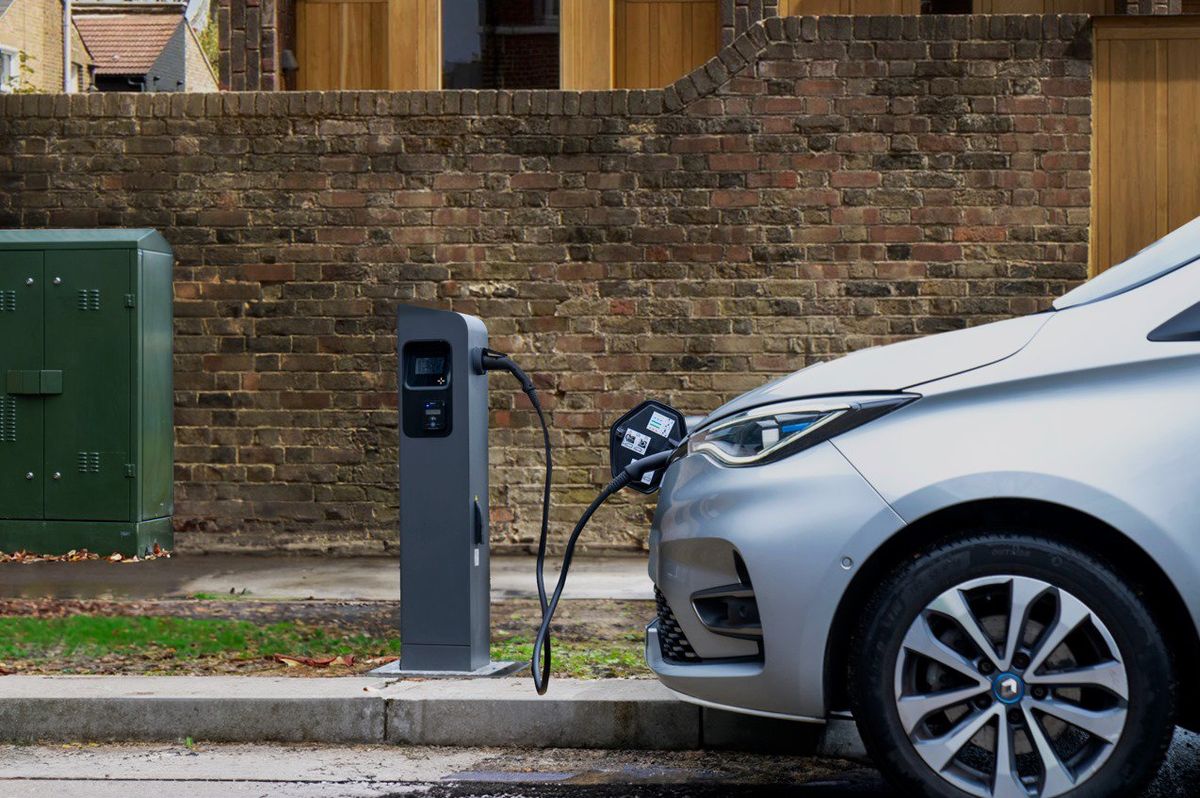One of the knocks on the potential of electric vehicles has been the paucity of charging stations compared with the near-ubiquitous presence of gas stations. The standard question posed by EV naysayers is, “What if an EV’s battery is nearly depleted and the nearest charging station is too far to reach?”
BT Group, Britain’s largest telecom service provider, has stepped forward with an idea that could ensure EVs are virtually always within range of a charger. The company has announced a pilot project to retrofit street cabinets traditionally used to store broadband Internet and telephone cabling. The first such conversion has already been completed in East Lothian, Scotland. BT Group says more cabinets in Scotland, England, Wales, and Northern Ireland will be repurposed in the coming months—as many as 600 such conversions by the end of 2024.
Repurposing the street cabinets, known as DSLAM boxes (short for “digital subscriber line access multiplier” in some countries) makes sense now that more people have “cut the cord” and increasingly rely on wireless phone service for calls and Internet access. Interestingly, the BT Group’s upgrade relies on a device that allows electricity from the existing DSLAM power lines to be shared to a charge point alongside the existing broadband service, with no need to create a new power connection.
The benefit is that the remaining wired telecom connections don’t have to be taken out of service to make way for EV charging, nor do streets have to be dug up to run wires for EV charging. BT says that for a street cabinet to be suitable for double duty in telecom and EV charging, it has to have a 100-ampere power connection and be located within 80 meters of the spot designated for cars to pull up and plug in.
BT Group’s design will allow each street cabinet to offer two 7.4-kilowatt AC connections that will each provide a full charge of a vehicle’s battery in 6 to 8 hours. A company representative says overnight charging will likely be the standard use case.
When a driver pulls up to top off their vehicle’s battery, they will pay for the electricity via an app on their phone or with a debit or credit card equipped for contactless payments. BT Group says it is still investigating the feasibility of allowing drivers to reserve charging time slots at a particular box. Pricing information is also not yet available.
BT Group says that about 60,000 curbside cabinets it owns in the United Kingdom could potentially be upgraded. That would be a significant push toward the goal of 300,000 charging stations set by the U.K. government. There are roughly 54,000 public EV charging stations currently available in the U.K.
The idea of using existing street infrastructure to advance EV charging efforts has been well received. The organizers of CES 2024 named BT Group’s pilot an innovation honoree for outstanding design and engineering.
Willie Jones is an associate editor at IEEE Spectrum. In addition to editing and planning daily coverage, he manages several of Spectrum's newsletters and contributes regularly to the monthly Big Picture section that appears in the print edition.



